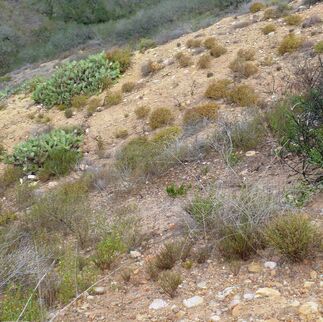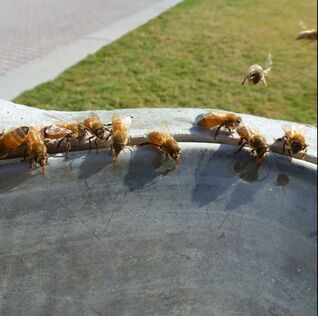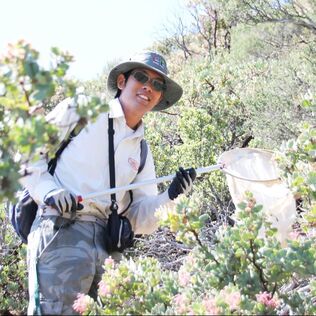Our research focuses broadly on plant-pollinator interactions in a changing world, with a particular focus on native bees.

Impacts of climate change on plant-pollinator mutualisms
Climate change is one of the leading drivers of biodiversity loss worldwide, and we know from a number of studies that climate warming has caused mismatches between the activity timeframes of plants and their pollinators. But how do other aspects of climate change--i.e., increased climate instability and increased frequency of extreme climate events (such as drought)--impact pollinator populations and the pollination services they render? We will address these questions using field and laboratory experiments and long-term monitoring of natural pollinator populations.

Impacts of non-native species on plant-pollinator mutualisms
Non-native species are present in almost all ecosystems bordering human activities, and exert various negative and positive impacts on the native biota. We are particularly interested in the impact of the western honey bee (Apis mellifera), a globally important introduced pollinator, on the ecology and evolution of native plants and pollinators. We will elucidate the local determinants and consequences of feral and managed honey bee abundance by surveying the diverse ecoregions of Oklahoma. We are also interested in how non-native plant species are being integrated into plant-pollinator interaction networks in different ecological settings. What are the circumstances in which they need to be most aggressively controlled, and are there instances in which they should be tolerated as function-contributing members of "novel ecosystems"?
Non-native species are present in almost all ecosystems bordering human activities, and exert various negative and positive impacts on the native biota. We are particularly interested in the impact of the western honey bee (Apis mellifera), a globally important introduced pollinator, on the ecology and evolution of native plants and pollinators. We will elucidate the local determinants and consequences of feral and managed honey bee abundance by surveying the diverse ecoregions of Oklahoma. We are also interested in how non-native plant species are being integrated into plant-pollinator interaction networks in different ecological settings. What are the circumstances in which they need to be most aggressively controlled, and are there instances in which they should be tolerated as function-contributing members of "novel ecosystems"?

Surveying and monitoring native pollinators in Oklahoma
As a member of the Oklahoma Biological Survey and the Oklahoma Natural Heritage Inventory, we are working to construct an inventory and distribution map of pollinator taxa within the state of Oklahoma, starting with native bees. To do so, we will combine standardized field surveys with community science partnerships to cover every county of Oklahoma. These baseline data, combined with subsequent monitoring, can then be used to address questions in each of the research topics above, as well as provide data on the species and habitats that are most in need of conservation intervention.
